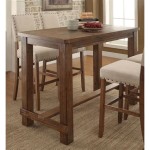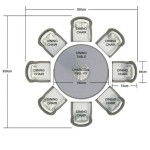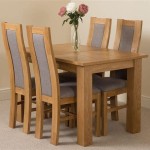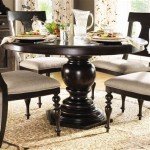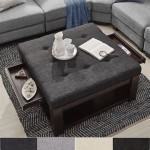The Enduring Appeal of the Arts and Crafts Lamp Table
The Arts and Crafts movement, flourishing from the late 19th to the early 20th century, championed handcrafted artistry and a rejection of mass-produced, often poorly designed industrial goods. This philosophy extended to furniture, giving rise to distinctive and beautiful pieces like the Arts and Crafts lamp table. These tables were not merely functional; they were embodiments of the movement’s core tenets, emphasizing natural materials, visible construction, and a commitment to quality craftsmanship. The enduring popularity of Arts and Crafts lamp tables stems from their inherent beauty, practicality, and connection to a significant period in design history.
Characterized by clean lines, sturdy construction, and a focus on wood grain and joinery, the Arts and Crafts lamp table serves as an excellent example of the movement’s aesthetic principles. Unlike the ornate, heavily embellished furniture of the Victorian era that preceded it, Arts and Crafts furniture embraced simplicity and functionality. The lamp table, in particular, provided a practical surface for lighting, books, and decorative objects, while simultaneously serving as a visual statement of the homeowner’s appreciation for handcrafted design.
The design of Arts and Crafts lamp tables often showcases the inherent beauty of the materials used. Oak was a particularly popular choice, prized for its strength, durability, and prominent grain. Other woods, such as mahogany and cherry, were also employed, often in combination to create contrasting visual effects. The finishing techniques typically favored natural stains and oils that enhanced the wood’s natural color and grain, rather than obscuring it with heavy varnishes or paint. This emphasis on natural materials was a deliberate effort to connect the furniture to the natural world, a key principle of the Arts and Crafts movement.
Furthermore, the construction techniques employed in creating Arts and Crafts lamp tables were deliberately visible and honest. Joinery, such as mortise-and-tenon joints, dovetail joints, and exposed pegs, was not concealed but rather celebrated as a testament to the skill and craftsmanship of the maker. This transparency in construction served as a counterpoint to the mass-produced furniture of the time, which often concealed inferior materials and construction methods beneath layers of veneer and ornamentation. The visible joinery of an Arts and Crafts lamp table not only added to its visual appeal but also ensured its structural integrity and longevity.
Key Point 1: Defining Characteristics of Arts and Crafts Lamp Tables
Several defining characteristics distinguish Arts and Crafts lamp tables from other furniture styles. These features reflect the movement's core principles and contribute to the tables' distinctive aesthetic. Understanding these characteristics is crucial for identifying and appreciating authentic Arts and Crafts pieces.
Firstly, the use of high-quality, solid wood is paramount. Unlike furniture constructed with veneers or particleboard, Arts and Crafts lamp tables are typically made from solid oak, mahogany, cherry, or other durable hardwoods. This ensures the table's structural integrity and allows the natural beauty of the wood grain to shine through. The selection of wood is carefully considered, with an emphasis on showcasing the wood's natural character, including knots, grain variations, and other imperfections that add to its unique appeal.
Secondly, the aforementioned visible joinery is a hallmark of the style. Mortise-and-tenon joints, where a projecting tenon fits snugly into a corresponding mortise, are commonly used to connect legs to the tabletop and other structural components. Dovetail joints, known for their exceptional strength, are often used to join drawers and other smaller pieces. These joints are not hidden but rather exposed and celebrated as a testament to the craftsman's skill. The precision and craftsmanship evident in these joints contribute to the table's overall structural integrity and aesthetic appeal.
Thirdly, simple, clean lines and a lack of excessive ornamentation are characteristic of Arts and Crafts design. Unlike the elaborate carvings and embellishments of Victorian furniture, Arts and Crafts lamp tables feature straightforward, geometric shapes and minimal decorative details. The emphasis is on the inherent beauty of the materials and the quality of the construction, rather than on superficial ornamentation. Any decorative elements, such as inlaid wood or metal accents, are typically simple and understated, complementing the overall design without overwhelming it.
Finally, the finish applied to Arts and Crafts lamp tables is typically a natural stain or oil that enhances the wood's natural color and grain. These finishes protect the wood from moisture and wear while allowing its inherent beauty to remain visible. Unlike glossy varnishes or paints, natural finishes allow the wood to breathe and develop a rich patina over time. This natural finish contributes to the table's overall warmth and character.
Key Point 2: Prominent Designers and Makers of Arts and Crafts Lamp Tables
Several prominent designers and makers played a significant role in shaping the Arts and Crafts furniture landscape, creating iconic designs that continue to be admired and replicated today. Understanding the contributions of these individuals and companies provides valuable insight into the history and evolution of the style.
Gustav Stickley is arguably the most well-known figure associated with Arts and Crafts furniture. His company, Stickley Brothers Company, produced a wide range of furniture, including lamp tables, characterized by their sturdy construction, simple lines, and emphasis on functionality. Stickley's designs often featured exposed tenons, quarter-sawn oak, and a distinctive "mission oak" finish. His furniture was widely distributed and helped to popularize the Arts and Crafts aesthetic across the United States.
Another influential figure was Charles Limbert, whose furniture designs were known for their distinctive geometric shapes and use of cutouts. Limbert's lamp tables often featured stylized floral or geometric motifs, adding a touch of elegance to the otherwise simple designs. His company, Charles P. Limbert Furniture Company, produced a wide range of Arts and Crafts furniture, including lamp tables, dining sets, and bedroom furniture.
Elbert Hubbard and his Roycroft community also made significant contributions to the Arts and Crafts movement. The Roycroft Shops produced a variety of handcrafted goods, including furniture, books, and metalwork. Roycroft lamp tables were often characterized by their simple, rustic designs and use of natural materials. The Roycroft community emphasized the importance of craftsmanship and the connection between the artist and the product.
Beyond these individual designers, numerous other furniture companies and workshops contributed to the Arts and Crafts movement. These companies, often located in the Midwest and East Coast, produced a wide range of furniture, including lamp tables, that reflected the movement's core principles of craftsmanship, simplicity, and functionality. Identifying the makers of Arts and Crafts lamp tables can be challenging, as many pieces were not explicitly marked. However, certain design features, construction techniques, and material choices can often provide clues to their origin.
Key Point 3: The Enduring Value and Relevance of Arts and Crafts Lamp Tables
Despite being over a century old, Arts and Crafts lamp tables continue to hold significant value and relevance in contemporary homes. Their enduring appeal stems from their timeless design, exceptional craftsmanship, and connection to a significant period in design history.
One reason for their continued popularity is their ability to seamlessly integrate into a variety of interior design styles. While they are naturally at home in Arts and Crafts-inspired interiors, their simple lines and natural materials also complement modern, minimalist, and even eclectic design schemes. Their understated elegance allows them to blend in without dominating the space, while their inherent beauty adds a touch of warmth and character.
Furthermore, the quality of craftsmanship inherent in Arts and Crafts lamp tables ensures their longevity and durability. Unlike mass-produced furniture that is often designed for obsolescence, these tables were built to last. Their solid wood construction, sturdy joinery, and durable finishes ensure that they can withstand the rigors of daily use for generations. Investing in an Arts and Crafts lamp table is not just a purchase; it is an investment in a piece of furniture that will last a lifetime.
Beyond their aesthetic and practical qualities, Arts and Crafts lamp tables also hold significant historical and cultural value. They represent a significant period in design history, a time when artisans and designers rejected mass production in favor of handcrafted artistry. Owning an Arts and Crafts lamp table is akin to owning a piece of history, a tangible connection to a movement that emphasized craftsmanship, simplicity, and the beauty of natural materials. This historical and cultural significance adds to their overall value and appeal.
Finally, the increasing emphasis on sustainability and ethical consumption has further contributed to the renewed interest in Arts and Crafts furniture. The movement's focus on natural materials, durable construction, and timeless design aligns perfectly with contemporary values of environmental responsibility and mindful consumption. By choosing an Arts and Crafts lamp table, consumers are supporting a tradition of sustainable craftsmanship and investing in a piece of furniture that is both beautiful and environmentally friendly.
In conclusion, the Arts and Crafts lamp table remains a testament to the enduring power of handcrafted design. Its simple lines, sturdy construction, and emphasis on natural materials continue to resonate with contemporary homeowners who appreciate quality, craftsmanship, and a connection to the past. The enduring appeal of these tables lies not only in their aesthetic beauty but also in their inherent practicality and their embodiment of the Arts and Crafts movement's core principles.

Quoizel Inglenook 25 Glass Arts And Crafts Tiffany Style Table Lamp

Plan For Arts Crafts Lamp By Wood Magazine

Mid Century Arts Crafts Table Lamp

Arts And Crafts Table Lamp Stickley Style

Robert Louis Tiffany Gerald Traditional Mission Style Accent Table Lamp 23 High Deep Metallic Antique Art Glass Shade Decor For Living Room

Limbert Pagoda Style 164 Mission Arts And Crafts Side Table

Craftsman Style Table Lamp Little Brown Stickley Museum

040 Library Table Lamp

Mission Craftsman Table Lamp Saugatuck

Arts And Crafts Table Lamps Plus


